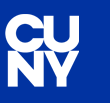
Publications and Research
Document Type
Book Chapter or Section
Publication Date
12-2024
Abstract
What are the barriers and possibilities archives education presents to the disabilities community? More specifically, how can archives education and teaching with primary sources provide opportunities for disabled students that they might not find in mainstream education settings? What matters when working with students with disabilities in archives, and what does it feel like to be a disabled educator in an archive? How can education in archives provide opportunities for vulnerability, connection, and liberation? Sharing a passion for the possibilities of education work in archives and special collections, Jen Hoyer and Julia Pelaez sat down for a conversation about these issues and share that discussion through this chapter. While this chapter is not a toolkit for doing education work in an archive, it aims instead to reinforce why archives and archivists should support education work that prioritizes students and staff with disabilities. This work is an important strategy for reframing ableist thinking about who our archives serve and how, and for recognizing what a critical disabilities perspective can bring to the archives.
Included in
Archival Science Commons, Disability and Equity in Education Commons, Information Literacy Commons


Comments
This book chapter was originally published as Pelaez, Julia, and Jen Hoyer. “It’s so Liberating to Do the Work: Education in Archives Creates Space for People with Disabilities.” In Preserving Disability: Disability and the Archival Profession, edited by Gracen Brilmyer and Tang Lydia, 187–219. Series on Archives, Archivists, and Society 10. Sacramento, CA: Litwin Books, 2024.